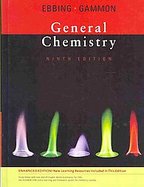Product notice
Returnable at the third party seller's discretion and may come without consumable supplements like access codes, CD's, or workbooks.
| Seller | Condition | Comments | Price |
|
APlus Textbooks
|
Very Good
|
$6.81
|
|
BooksRun
|
Acceptable
|
$9.96
|
|
Wonder Book - Member ABAA/ILAB
|
Good |
$11.13
|
|
A2ZBooks
|
Good
|
$34.75
|
|
Bonita
|
Good
|
$39.95
|

Please Wait

